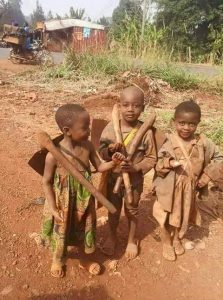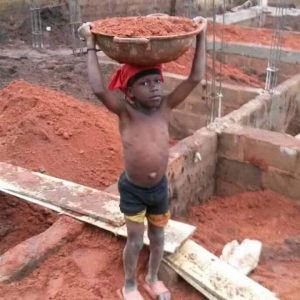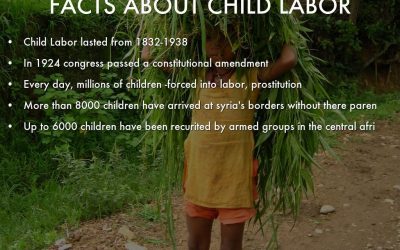What is Child labor

Consequences of child labor
The impact of war on children

How did child labor affect children’s lives?:
Death
Hundreds of thousands of children die of direct violence in war each year. They die as civilians caught in the violence of war, as combatants directly targeted, or in the course of ethnic cleansing.
Injury
Children suffer a range of war injuries. Certain weapons affect them particularly. A landmine explosion is more likely to kill or seriously injure a child than an adult . Thousands of children suffer landmine injuries each year.
Disability
Millions of children are disabled by war, many of whom have grossly inadequate access to rehabilitation services. A child may have to wait up to 10 years before having a prosthetic limb fitted. Children who survive landmine blasts rarely receive prostheses that are able to keep up with the continued growth of their limbs.
Illness
Conditions for maintenance of child health deteriorate in war – nutrition, water safety, sanitation, housing, access to health services. There may be loss of immunity to disease vectors with population movement. Refugee children are particularly vulnerable to the deadly combination of malnutrition and infectious illness. There is also interruption of population immunization programs by war which may be responsible for increases in child mortality.
Rape and prostitution for subsistence
These phenomena which often occur in situations of war, ethnic cleansing, and refugee life leave lasting physical impacts in sexually-transmitted diseases, including HIV/AIDS, psychological impacts and changes in life trajectory.
Psychological suffering
Children are exposed to situations of terror and horror during war – experiences that may leave enduring impacts in posttraumatic stress disorder. Severe losses and disruptions in their lives lead to high rates of depression and anxiety in war-affected children. These impacts may be prolonged by exposures to further privations and violence in refugee situations.
Moral and spiritual impacts
The experience of indifference from the surrounding world, or, worse still, malevolence may cause children to suffer loss of meaning in their construction of themselves in their world. They may have to change their moral structure and lie, steal, and sell sex to survive. They may have their moral structure forcibly dismantled and replaced in training to kill as part of a military force.
Social and cultural losses
Children may lose their community and its culture during war, sometimes having it reconstituted in refugee or diaspora situations.
Child soldiers
It is estimated that there are tens of thousands of young people under 18 serving in militias in about 60 countries. They are particularly vulnerable to all of the impacts listed above.

